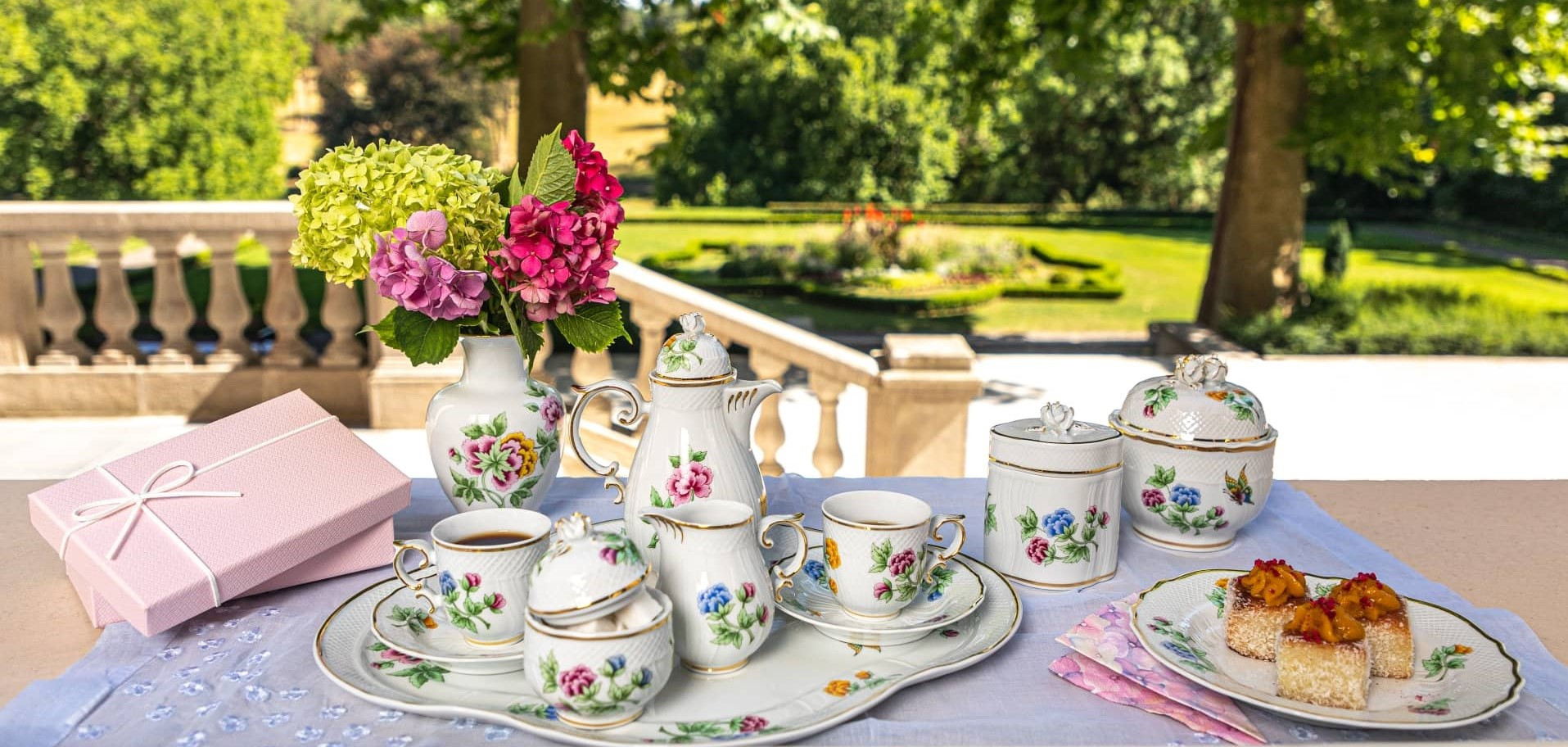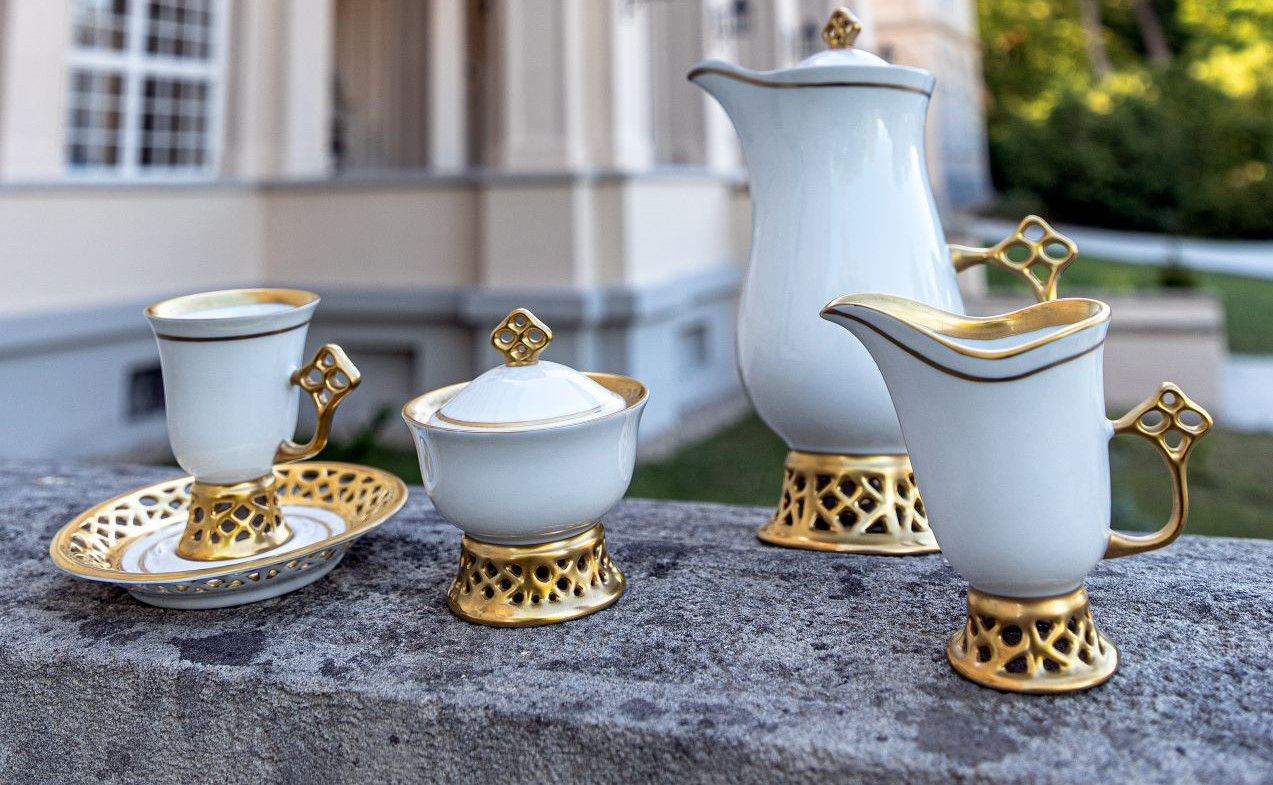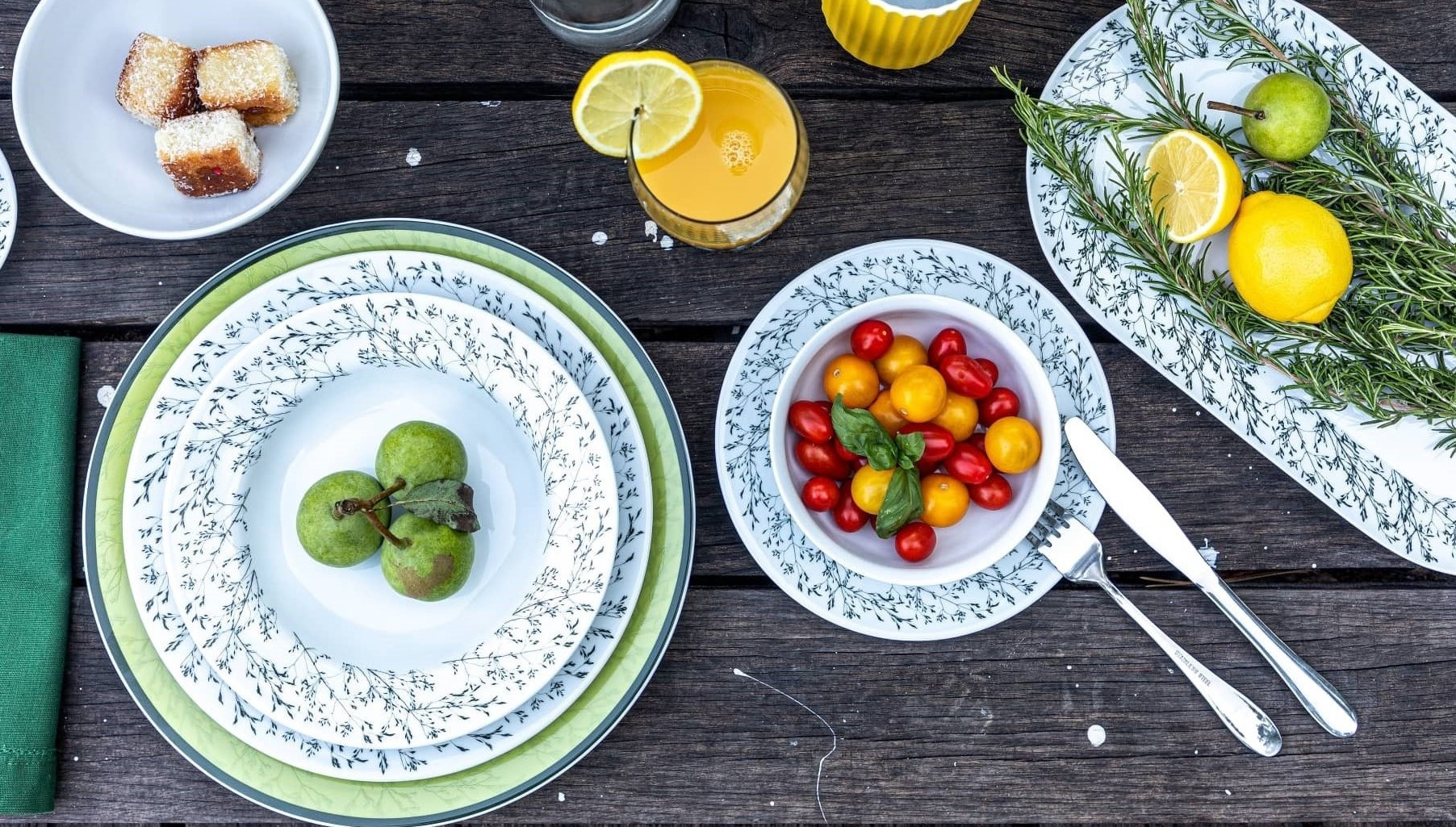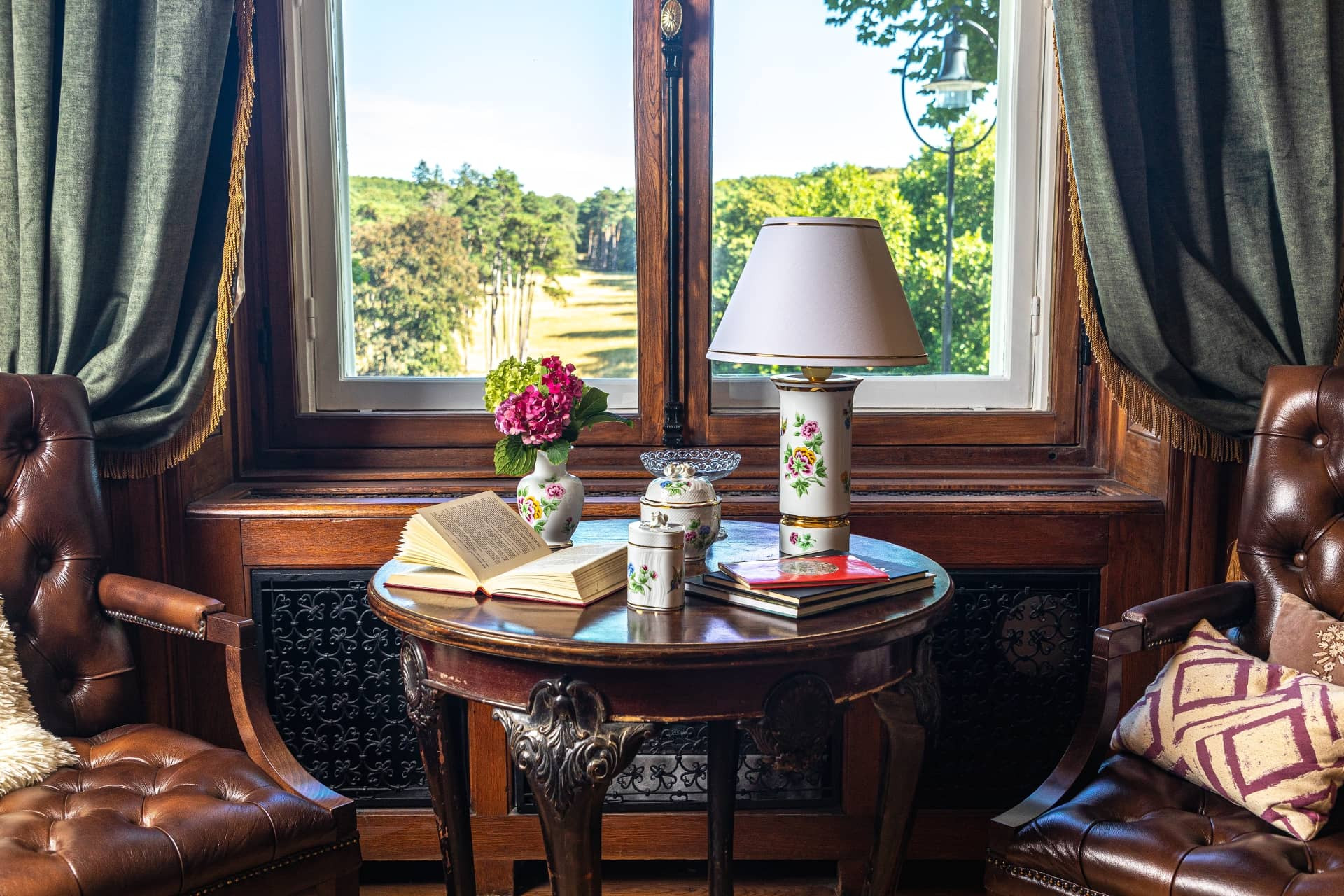In the beginning there was glass…
1777 – an easy-to-remember year when several notable events have taken place: Maria Theresa, Habsburg ruler and Queen of Hungary issues the edict Radio Educationis, which organized the Hungarian state education system from the basics to university level into a unified system for the first time; France recognizes the independence of the United States of America; The University of Trnava is moved to Buda; German mathematician Carl Friedrich Gauss and poet and dramatist Henirich von Kleist are born; György Bessenyei writes his play ‘The philosopher’; Joseph Haydn’s opera buffa Il mondo della luna is first performed in Eszterháza. – At Count Károlyi’s family estate in Hollóháza, the predecessor of today’s Hollóháza Porcelain Manufactory, the first glassmaking workshop is built.
.jpg)
Industrial production has been continuous for almost 250 years in this little village surrounded by the mountains of Northern Hungary. Glassmaking – under the direction of József Rolly and later Antal Wagner – proved to be a really profitable activity, however, after a few decades the ancient technology found itself unable to compete with the modern Czech, German and Italian factories, which meant that the profile had to be changed.
…which was followed by artistic ceramics from stoneware
Residents of the region were quick to recognize the richness of local nature and the possibilities inherent in it. The mountain rising above the factory was covered with a loose, snow-white rock called kaolin, beneath the ground there was reddish-blue clay, the Nyíri stream running next to the settlement provided water, and there was enough high quality firewood around as well.
In 1831, Hollóháza switched to the production of stoneware. It would have been hard to find a home, regardless of social class, which did not possess at least some of the mainly flower-patterned popular ceramic objects made here – tableware, jugs, bowls, decorative plates or flasks. The success was due to ceramist and later co-owner Ferenc Istványi, who managed the plant for more than four decades (1860-1902) and developed the manufactory consisting of a few buildings into a major facility by the end of the century.
In order to achieve the most perfect material quality, a separate laboratory was also set up at the manufactory’s site on his request. He introduced such artistic and technical innovations as the gilding of tableware, the decoration of dishes with bright colours, or the use of the Hollóháza trademark depicted with a pine tree. Over time faience and ceramic stoves also appeared in the ever-expanding product range.
On 12 August, 1892, the plant was officially christened as the Hollóháza Stoneware – Majolica and Stove Factory. Due to its unbroken popularity and recognition, the factory’s products were featured at the 1896 Millennium Exhibition and the 1900 world’s fair in Paris. At the millennium presentation, Hollóháza was praised as follows:
“The varied and bold shapes of its luxurious dishes, as well as their bright and harmonious colouring, greatly enhanced the factory’s exhibition. It makes the whitest stoneware in Hungary, the reason for which lies in the peculiarity of the Radvány clay it processes.”
The storms of two world wars
After the death of Ferenc Istványi, his son took over the management of the factory, who envisioned ambitious plans even in the increasingly difficult economic situation of the era. He modernized production, electrified the equipment, and it was at this time that the deer motif first appeared on the sets. Further development was put to an end by the First World War. The factory suffered through the years that followed, characterized by frequent changes of ownership.
Hollóháza gained momentum again in 1939, when a porcelain merchant from Kosice, Szakmáry Károly took over the management of the factory. He had a new coal-fired circular furnace built, replaced the steam-powered generator with electric equipment, and installed three modern electric furnaces, which enabled the production of new decorative elements. Thanks to Szakmáry’s enthusiasm and expertise, the factory began to grow again, and they returned to the use of Hungarian ornamentation, while producing more and more products in line with the prevailing tastes of the times. By the time Hollóháza regained its previous quality and successes of the end of the last century, World War II broke out. The factory suffered serious damage and was nationalized overnight in 1948.

The birth of Hollóháza porcelain
The dilapidated factory was restored in 1957: a new painting hall and a transformer station were built, the crushing mill was modernized, vocational training for the ceramics industry was introduced, and porcelain production was set in motion in Hollóháza. However, in the beginning, during the period of the first five-year plan, the end products did not resemble the masterpieces the factory was known for before. In the spirit of the socialist era, electrical porcelain insulators were produced within the framework of the national economy’s electrification program. Nevertheless, this did not supress the artistic inclination and aesthetic sense of the employees working here, and the beginning of the 1960s saw the production of dishes and ornaments begin again. Soon, skilled and talented craftspeople took over the task of product development. Since the factory performed well and it was the only industrial facility in the area, at the initiative of director László Steiner, the parent company Fine Ceramic Works authorized the complete renovation of the plant in 1965. The manufactory’s still standing, eye-catching red brick building was among the first projects to be completed, with inlaid porcelain letters announcing what is made here. The comprehensive modernization was completed in 1972. The newly installed propane-butane gas-heated tunnel kiln made it possible to produce hard-paste porcelain instead of the previously processed soft-paste type. Production capacity increased as well: while in 1971 251 tons of porcelain were fired in Hollóháza, a year later 390 tons were produced, and this amount increased to 543 tons in 1973. The number of employees rose to almost 1,000. Hollóháza has become an important workshop of Hungarian porcelain art.
World famous works of art
In the 1970s, the factory began to seek out professionally recognized world-renowned visual artist in order to have them design Hollóháza porcelain items or decorations. Victor Vasarely, Amerigo Tot and Endre Szász – just to mention the best-known artists. The new collections established a new style and brought international success to Hollóháza porcelain. The specially crafted, hand-painted unique products can be found all over the world, from the Vatican to the residences of heads of state, and also in the form of exclusive souvenirs such as trophies from major sporting events or gifts given to the most famous artists.
The most fruitful collaboration was conducted with the Hungarian painter and graphic artist, Endre Szász. Starting in 1978, an independent Szász Studio operated in the factory for almost 10 years. The characteristic black-and-white decors with solid gilding, decorated with the artist’s original graphics, came to life here. The Szász collection has been a popular product of the Hollóháza Porcelain Manufactory for a long time. The last collaboration was in 2002, when, on the occasion of the 225th anniversary of the factory’s foundation, a new collection of ornaments called Faces was designed by Endre Szász, which went on to win the Grand Prize of the 106th Budapest International Trade Fair as well as the Hungarian Product Grand Prize.
The Manufactory in the 21st century
At the turn of the millennium, in 2000-2001, the factory underwent another significant modernization enterprise in order to meet the technical requirements of the 21st century. A new high-pressure casting machine, carousel machines, and a state-of-the-art chamber furnace were put into operation. The factory successfully introduced and obtained the ISO 9001-2000 certificate.
Starting from the 2000s, the international market entered a stage of ever-increasing saturation by the flood of mass produced goods, to the detriment of small-scale, artisanal factories. By 2020, even the Manufactory, which had been operating for more than 240 years, found itself in a difficult economic situation. However, the history of Hollóháza porcelain did not end there, and as a result of a new ownership, it set new goals under a new name. Hollóháza Porcelain Manufactory Ltd. strives to restore Hollóháza porcelain to its former glory, to pass on the tradition and make this noble, yet practical material a sustainable, lovable and popular object of use for the younger generations as well.
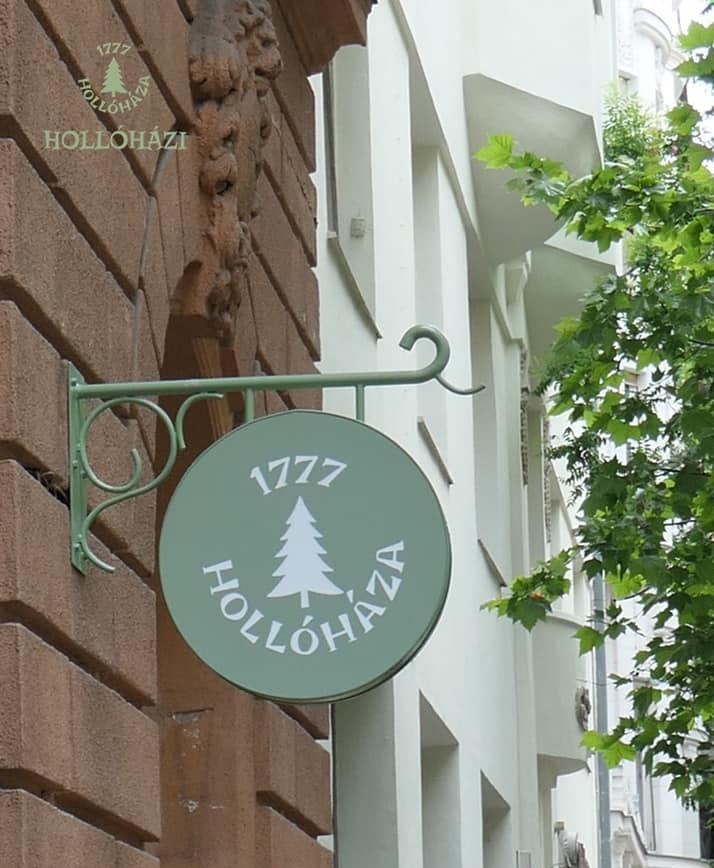
In order to achieve all this, manufacture technology and manual processing still form the basis of the production of Hollóháza porcelain. The ingredients and recipes follow the proven quality of the past, only the equipment and design change according to the latest trends, in which artists such as Zoltán Boros, Noméi Vészabó or Kati Zoób offer their talents in creating designs for us.
Today, the Hollóháza Porcelain Manufactory still stands for quality and natural values. Its new collections include both classic and modern styles, exclusive and conventional designs, ornate and minimalist decorations. In addition to the preservation of tradition, we place great emphasis on the introduction of new products, so in search of a new profile, we also started the production of industrial and construction ceramic products – naturally, without compromising any of our artistic standards. – Because who chooses Hollóháza porcelain, chooses beauty, quality and value.

